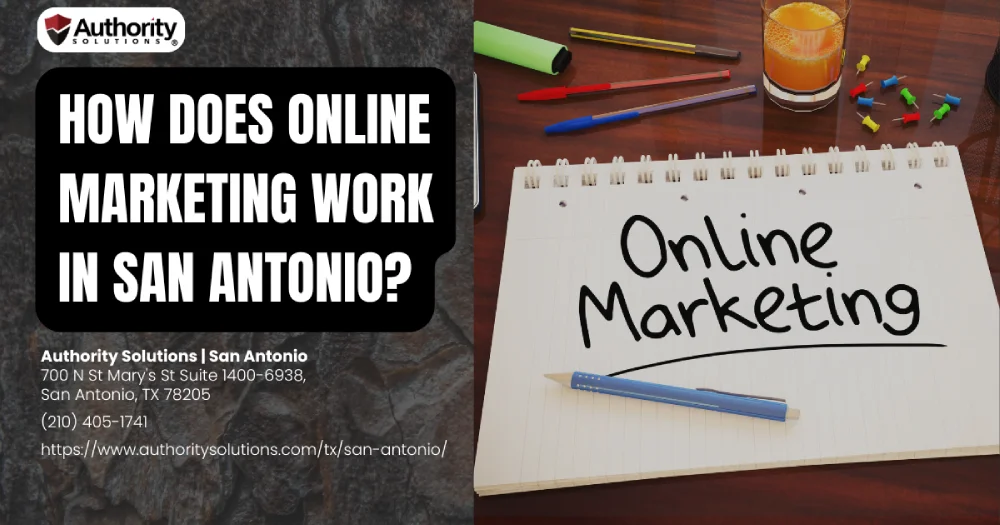Storyselling: Crafting Compelling Narratives In Internet Marketing Services
Are you tired of using the same old marketing techniques that fail to engage your audience? Look no further than storyselling – a powerful strategy for crafting compelling narratives that connect with potential customers. By tapping into the power of storytelling, you can create an emotional connection with your audience and drive sales like never before.
In this article, you'll learn the key elements of a successful narrative and how to apply them to your internet marketing services. You'll discover real-world examples of companies that have successfully implemented storyselling in their campaigns, and learn how to measure the success of your own efforts. With these tools at your disposal, you'll be on your way towards becoming a master storyteller in no time.
Understanding the Power of Storytelling in Marketing
You're probably wondering why storytelling is such a big deal in marketing, but let me tell you, it has the power to transport your audience into another world and leave them feeling connected to your brand like never before. Think about it: when was the last time you watched an ad that actually made you feel something? When a brand can evoke emotions from their audience through storytelling, they create a memorable experience that sticks with consumers long after they've closed out of their browser.
But what makes storytelling so powerful in marketing? For one, it allows brands to showcase their values and personality in a way that traditional advertising simply cannot. By crafting a narrative around your product or service, you're able to communicate its unique benefits and features while also giving consumers insight into who you are as a company. Storytelling also helps humanize your brand and build trust with potential customers - when people feel like they know the story behind your business, they're more likely to choose you over competitors.
So how do you go about crafting a compelling narrative for your internet marketing services? It all starts with understanding the key elements that make up any great story. From character development and conflict resolution to setting the scene and choosing the right tone, there are countless factors at play when it comes to creating an engaging tale. In the next section, we'll dive deeper into these elements and show you exactly how to use them in your own marketing campaigns.
Key Elements of a Compelling Narrative
To create an engaging storyline, it is essential to incorporate pivotal components that captivate the audience's attention. A compelling narrative must have a clear beginning, middle, and end that flows seamlessly. It should evoke emotions from the audience and make them feel connected to the story and its characters. Here are some key elements to consider when crafting your story:
- Character development: Your protagonist should be relatable and likable, making your audience invested in their journey.
- Conflict: A good storyline has an element of tension or conflict that drives the plot forward and makes the audience wonder what will happen next.
- Resolution: The resolution should tie up loose ends but still leave room for interpretation and discussion.
- Theme: Every story has a theme or message behind it that can resonate with your target audience.
Incorporating these elements can elevate your marketing efforts by providing an engaging way for customers to connect with your brand on a deeper level.
As you begin to apply storyselling techniques to your marketing strategy, keep in mind that storytelling is not just about telling a good tale - it's about connecting with your audience on an emotional level. By using stories to convey information about your product or service, you can build trust with potential customers while also entertaining them. In the next section, we'll explore some practical ways you can use storytelling in internet marketing services to boost engagement and drive conversions without feeling like you're selling anything at all!
How to Apply Storyselling Techniques to Your Marketing
When it comes to applying storyselling techniques to your marketing, there are three key points you need to keep in mind. First, you must identify your brand story and what makes it unique. Next, you'll want to find out what resonates with your audience by uncovering their own personal stories. Finally, you can craft the perfect message that speaks directly to them and connects on a deeper level. By following these steps, you'll be able to create compelling narratives that will capture the attention of your target audience and drive results for your business.
Identifying Your Brand Story
As you're crafting your brand story, it's important to focus on the unique aspects of your company and how they relate to your target audience. To identify your brand story, start by analyzing the following:
- Your company's mission and values
- The history of your company and its founders
- The specific products or services offered
- Customer testimonials and feedback
Once you have a clear understanding of these elements, you can begin to craft a narrative that highlights what sets your brand apart from competitors.
Your brand story is not just about telling consumers who you are, but also creating an emotional connection with them. By identifying what makes your brand unique and relatable to your target audience, you can create a compelling narrative that resonates with potential customers. This will ultimately lead to increased engagement, loyalty, and sales for your business.
Transition: Now that you've identified your brand story, it's time to delve deeper into finding the story of your audience.
Finding Your Audience's Story
Discovering your audience's unique experiences and values is crucial in building a deeper connection with them and creating a brand that resonates with their needs. By understanding the story of your target market, you can create marketing campaigns that speak directly to their desires and aspirations. This means researching your audience to find out what motivates them, what they are passionate about, and what problems they face.
To uncover your audience's story, start by analyzing demographic data such as age, gender, location, income level, education level, and occupation. But don't stop there - dig deeper into psychographic factors such as values, beliefs, interests, hobbies, personality traits, and lifestyle choices. Conduct surveys or interviews to gather insights from real people who fit your ideal customer profile. Use this information to craft messaging that speaks directly to their hearts and minds. Crafting the perfect message requires more than just knowing your audience's story - it also involves telling a compelling narrative that captures their attention and inspires action.
Crafting the Perfect Message
You can connect with your audience on a deeper level by crafting the perfect message that resonates with their desires and aspirations. Here are some tips to help you create messaging that speaks directly to your audience:
- Identify your audience's pain points and address them in your messaging.
- Use emotional language that evokes feelings and creates a sense of urgency.
- Be concise and clear in your messaging, avoiding jargon or technical terms.
- Use storytelling techniques to engage your audience and make them feel like they are part of a larger narrative.
By following these guidelines, you can create compelling messages that capture the attention of your audience and inspire them to take action. In the next section, we will explore examples of successful storyselling in marketing, showcasing how companies have implemented these strategies to great effect.
Examples of Successful Storyselling in Marketing
Many companies have utilized storyselling to successfully market their products or services, such as Coca-Cola's 'Share a Coke' campaign that personalized bottles with customers' names. The campaign was a huge success, generating over 1 billion impressions on social media and increasing sales by 2.5% in the US alone. This is a great example of how storytelling can create an emotional connection between consumers and brands.
Another successful example of storyselling is Airbnb's 'Belong Anywhere' campaign. The company created short films that showcased real people's experiences while using their platform to book unique accommodations around the world. By telling authentic and relatable stories, Airbnb was able to connect with their target audience on an emotional level and increase brand loyalty.
Patagonia is known for its dedication to environmental activism, which they incorporate into their marketing campaigns through storytelling. Their 'Worn Wear' initiative encourages customers to repair and reuse their clothing rather than simply buying new items. Through videos featuring real people sharing the stories behind their well-loved Patagonia pieces, the company has successfully positioned themselves as environmentally conscious and socially responsible in the eyes of consumers.
These examples demonstrate how powerful storytelling can be when it comes to marketing products or services. By creating narratives that resonate with audiences on an emotional level, companies can foster strong connections with customers and build brand loyalty over time. Now let's talk about measuring the success of your own storyselling campaign without losing momentum in your marketing strategy…
Measuring the Success of Your Storyselling Campaign
To truly gauge the impact of your storytelling campaign, it's important to set clear goals and metrics that align with your overall business objectives. Here are a few ways to measure your success:
- Track website traffic: Use tools like Google Analytics to monitor how many people are visiting your website, where they're coming from, and how long they're staying. If you see an increase in traffic after launching your storyselling campaign, it could be a sign that your message is resonating with your audience.
- Monitor social media engagement: Keep an eye on likes, shares, comments, and other forms of engagement on social media platforms like Facebook and Twitter. If you're seeing more activity than usual or if people are specifically mentioning aspects of your story in their comments, you may be onto something.
- Measure conversions: Ultimately, the goal of any marketing campaign is to drive sales or conversions. Make sure you have a way to track whether people who engage with your story end up making purchases or taking some other desired action (like signing up for a newsletter).
By setting specific metrics and tracking them over time, you'll be able to determine whether your storyselling efforts are paying off. Just remember that measuring success isn't always straightforward - sometimes it takes time for a campaign to gain traction or for customers to take action based on what they've seen or heard. Be patient and keep tweaking things as necessary until you find the right formula for success.
Frequently Asked Questions
What are the most common mistakes businesses make when attempting to implement storyselling in their marketing campaigns?
You may struggle with storyselling if you don't focus on your audience's needs and desires, fail to create a clear message, or simply tell instead of showing. Avoid these mistakes by honing your storytelling skills and practicing empathy.
How can businesses ensure that their storyselling efforts are authentic and not perceived as manipulative or insincere?
Ensure authenticity in your storyselling efforts by aligning your brand values with the message, using genuine customer experiences, and avoiding exaggeration. Be transparent about your intentions and aim for a mutually beneficial relationship with your audience.
Are there any industries or types of products/services that are better suited for storyselling than others?
You'll find storyselling works well for products/services that evoke emotions, solve problems, or have a unique selling point. Industries that benefit most include travel, food, fashion, and tech.
Can storyselling be effective in B2B marketing, or is it primarily a B2C strategy?
Yes, storyselling can be effective in B2B marketing. Everyone loves a good story, and businesses are no exception. By telling a compelling narrative about your product or service, you can establish trust and build long-lasting relationships with potential clients.
How can businesses continue to evolve and refine their storyselling approach over time to maintain its effectiveness?
To maintain your storyselling effectiveness, consistently analyze audience feedback and refine your narrative accordingly. Utilize data-driven insights, embrace creativity, and keep your messaging aligned with business goals to stay relevant and engaging.
Conclusion
Congratulations! You now have the tools to craft compelling narratives that captivate your audience and boost your marketing efforts. By understanding the power of storytelling, identifying key elements of a compelling narrative, and applying storyselling techniques to your marketing, you can create a unique brand identity that resonates with customers.
Remember to keep track of your progress by measuring the success of your storyselling campaign. Use analytics and customer feedback to adjust and refine your approach as needed. With dedication and practice, you can become a master storyteller in internet marketing services and elevate your business to new heights. Best of luck on your journey!









